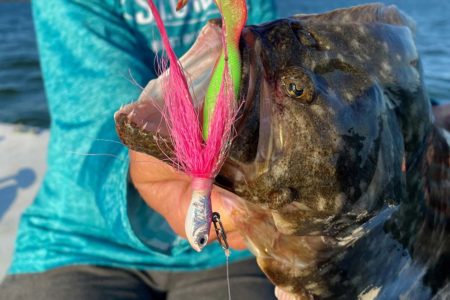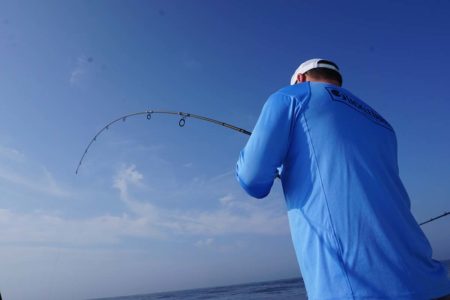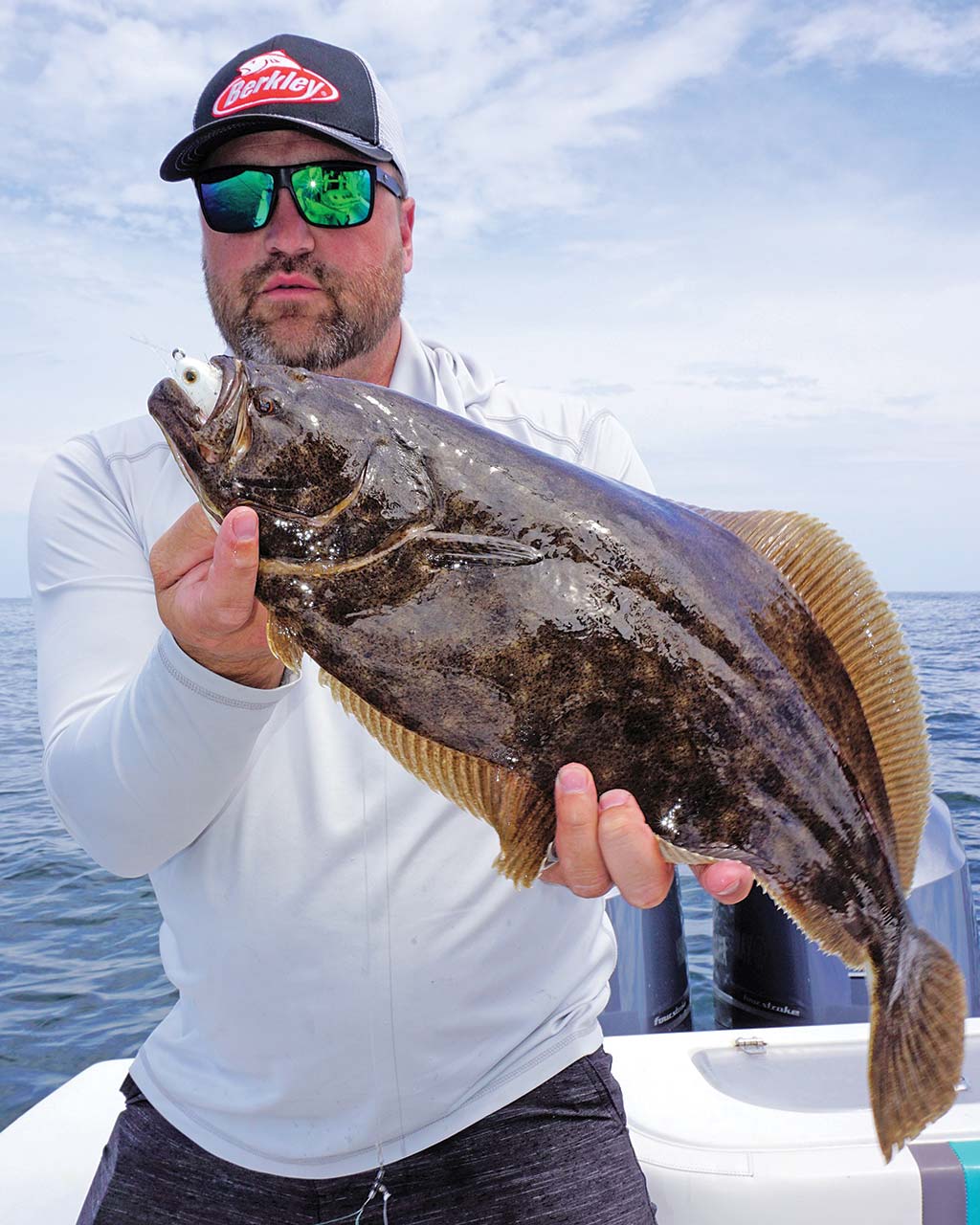
So what’s it going to be today? Sometimes you have to let the conditions decide!
It was a gorgeous morning on the ocean. The wind was nonexistent and the surface was oily-slick calm, only showing the slightest texture from the occasional puff from Mother Nature. Often these conditions render a slow drift that can hamper a fluke bite, however on this day the speed clocked in at an ideal 1 mph for most of the morning.
My crew and I bounced jigs and bucktails with dropper-loop teasers fastened about 12 inches above the jig. This terminal set-up is one of the most popular with East Coast fluke anglers that prefer to put action to the presentation – and that we did. The guys rapidly jigged their vertically stacked rigs to outstanding volume and many net-worthy fish.
At about 1 p.m. a shift in conditions crept in. The breeze started to pick up, but not before we encountered a fantastic flurry of keeper fish with a several nice “kicker” fish in the 6-pound range. I have observed that during the small window of time when there is a light breeze to when the fan really turns on, a terrific bite of quality fluke often takes place. In the summer, the most frequent occurrence of this phenomenon takes place when the morning stillness gives way to a hard sea breeze as the sun reaches its peak in the sky. It’s the 30 minutes to an hour between the light breeze and the gusts causing a moderate chop on the surface that fluke go on the feed. On hot days that start out calm, this bite window usually occurs between 11 a.m. and 1 p.m.
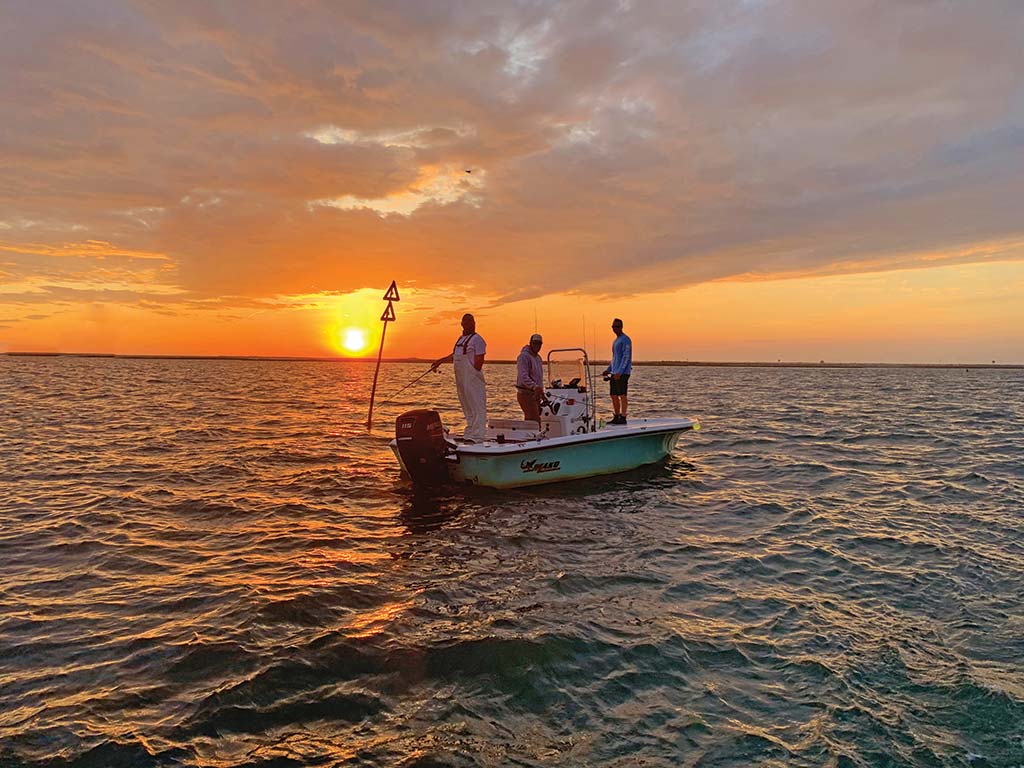
Dancing A Jig
During the slow to medium drift speeds of our morning bite, a single bucktail or the aforementioned stacked rig worked extremely well when jigged, which is the process of bouncing the bait at an extremely fast pace. An up and down motion of one’s wrist, in short, intense bursts, is the most common method. Upon feeling weight, you set the hook hard with an upward thrust. A solid hook-set is necessary to ensure greater success in getting fish to the net. In addition, sharp hooks are of paramount importance in order to penetrate with the highest level of frequency.
More often than one would think, a fluke would get foul hooked in the side and come to the boat with an unnatural headshake and bobbing motion. Experienced fishermen recognize the different feeling of a foul-hooked fish and you can see the line spin oddly in the water with each turn of the reel – more like a skate, but with the headshakes of a summer flounder. It’s likely the fluke is sniffing around, grabbing at the tail of a Gulp or meat ribbon when the angler set up on the fish, hence a foul-hooked flatty.
Jigs, bucktails and stacked teaser rigs work very well within a reef situation that features scattered structure like tanks, subway cars, concrete or reef balls, which make up some of the common items placed on some artificial reef sites. The same principle works when employed on low profile rock that proliferates waters where the prehistoric glaciers receded leaving behind a bottom fisherman’s playground. This rig and aggressive application really shine in areas where structure is spread across the bay or ocean floor.
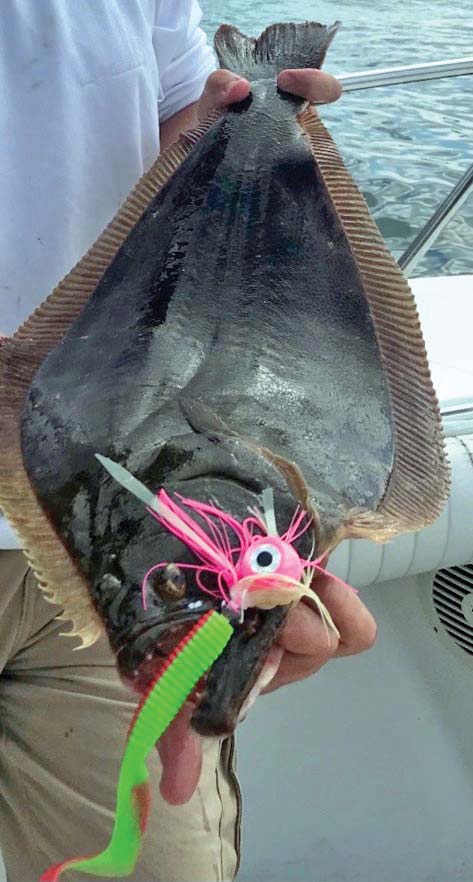
Summer flounder are often tantalized by the teaser hook high up on the rig while in other instances, they prefer to nail the jig or bucktail. A sluggish to moderate drift allows fluke more time to examine a bait choice on the teaser rig. Anglers often choose a Berkley Gulp grub, swimming mullet or shrimp for this position on the rig. They can be paired with a bare hook or small jig. The other option is a live minnow on a bare hook or small ribbon of meat. Due to the intensity of the jigging that accompanies this set-up, a strip bait is more apt to survive the wear and tear than a more fragile live bait. The weighted-jig portion of the rig is invariably married to a Berkley Gulp selection or a length of meat.
It’s not just structure where rapidly jigging a bucktail can bag a bounty of flatties. Back bays, harbors and rivers are largely devoid of substantial structure are more likely paved with mud, sand and broken shell bottom. Yet jigs and bucktails fired off the bottom by anglers using lighter tackle score well under these conditions. Braided line such as the Berkley X9 with a razor-thin diameter gives anglers the opportunity to use the lightest jigs and bucktails in their tackle box. It’s not entirely uncommon to see anglers using 10-pound braid leading to 3/8-ounce jigs on six-foot light action rods that could serve well on a mountain trout stream! This highly-downsized tackle has been growing in popularity over the last decade or more.
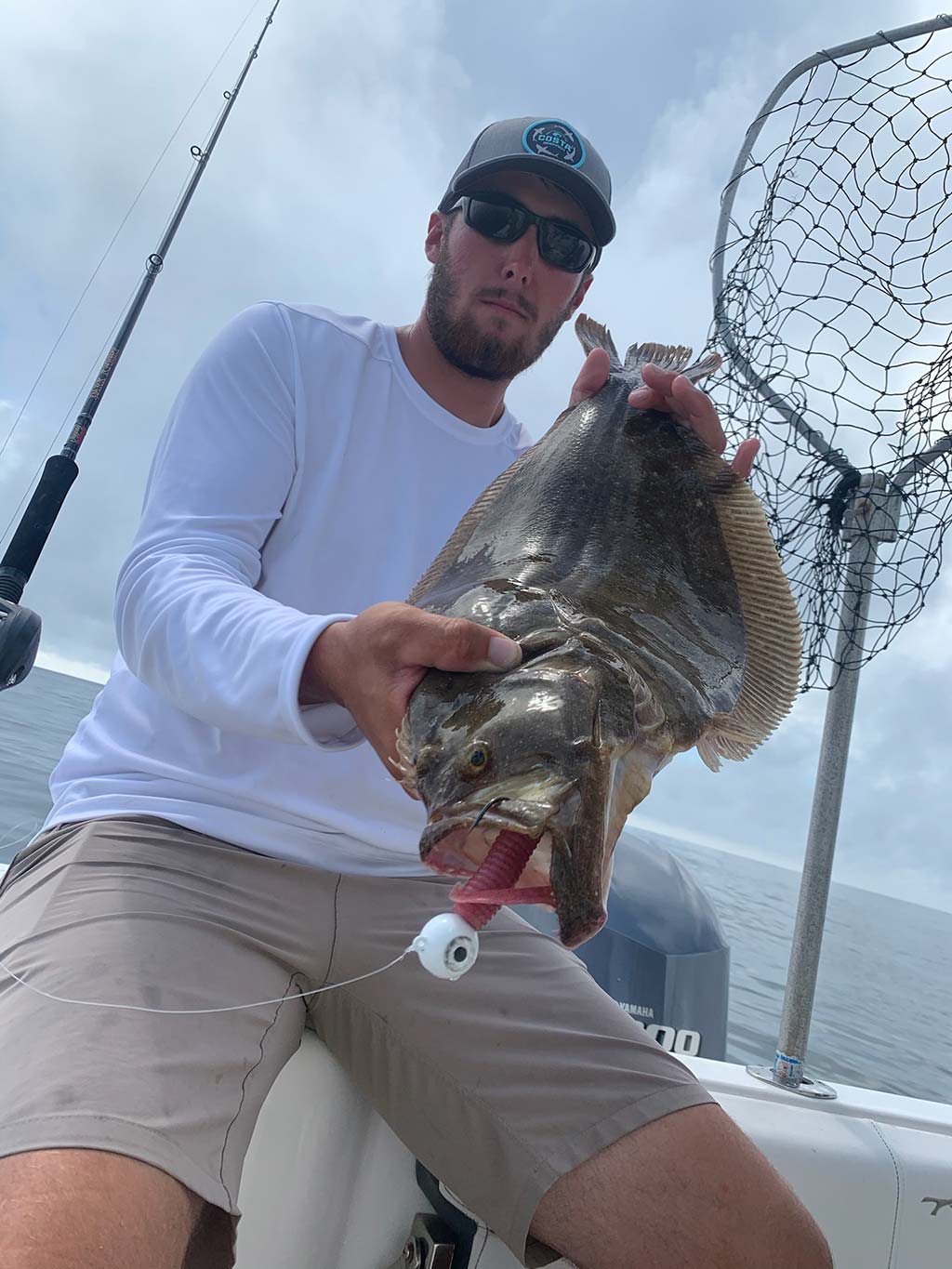
Rig Them Up
During the outing spotlighted earlier, a 15-mph sea breeze with gusts over 20 mph prevailed as the afternoon wore on. The strong bite disintegrated and we had to change our strategy as a 2-foot chop with crumbling white developed. Out came the rigs and bank sinkers. Some may consider 30 to 36 inches of monofilament leader to a hook, partnered with a stinger hook, somewhat “old school.” Be that as it may, the rig has its moments on a regular basis and knowing when to use it is key. Fast currents of 1.5 mph or more are prime for rigs such as these and when a typical afternoon sea breeze develops, there is no better time.
On this particular day, my crew regained its mojo and began netting more keeper fluke using rigs with long leaders falling away from the bank sinker. At the business end of the rig, the fellows had a few sweeteners like Colorado blades, beads and bucktail hair ahead of a 6-inch ribbon of fluke, sea robin or bluefish belly. A stinger hook helped keep the bait from twirling unattractively while providing extra insurance for a solid hookup. The jigging method gave way to lifting and dropping the sinker off the bottom, thus giving the wrists and elbows a much-needed break.
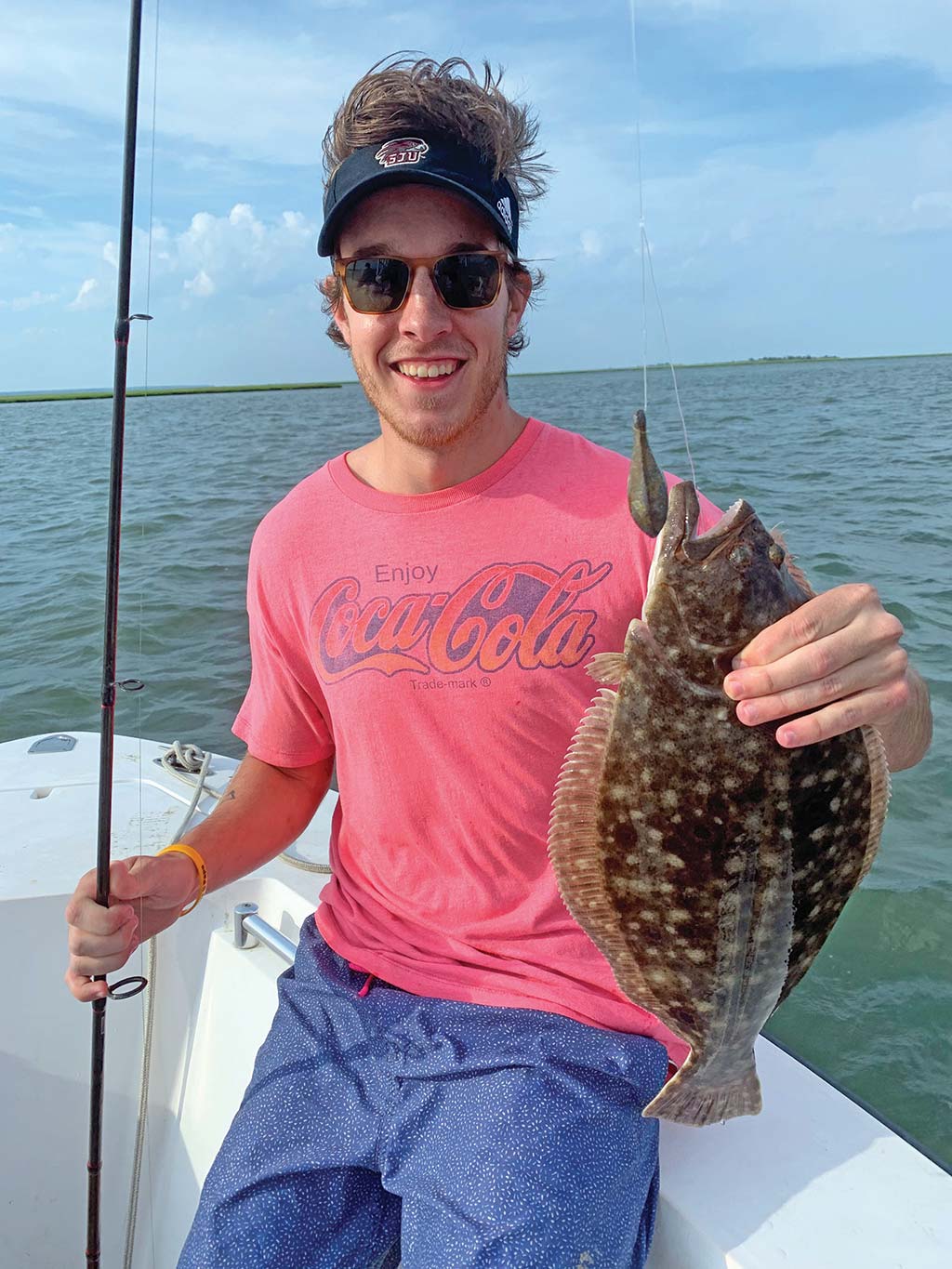
In the back bays and inlets, rigs such as these work extremely well with live minnows, snapper blues or peanut bunker, though live spot is also quite popular in some areas. The live bait choice does the work and no additional dressing ahead of the hook is necessary. Nor is there a need for a second, stinger hook when using the live stuff. When a fluke latches onto a live offering, give it a moment before setting the hook, especially if the bait is larger or the drift is fast. When the time is appropriate, I slowly lift the rod tip to see if the fluke is still there, then drive the hook home.
Wrecks are a great place to use a rig. It’s not that jigging a bucktail isn’t effective over an old ship or barge because it is. However, a meat pennant or live peanut bunker gently floated inches above sticky snags will get crushed by fluke of all sizes. Wreck fluke tend to be more aggressive perhaps because they want to grab the bait and return to the confines of the hull. In addition, the days that fish strike in this manner remind of me of a tautog or grouper because there aren’t nibbling at the bait, they are inhaling it.
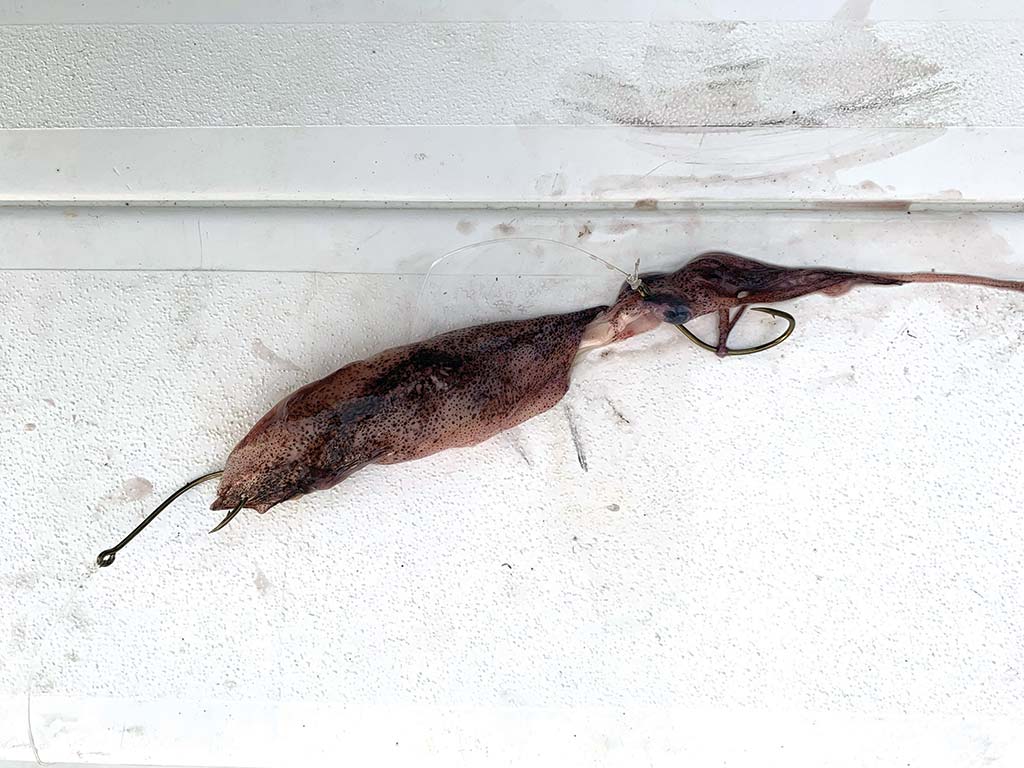
You should gently touch the bank sinker on the wreck every so often so they know they are in the strike zone. Jigging isn’t necessary for the rigged baits, instead, a rather a slow lift and flutter of the rig barely above the piece can be very effective. With a little luck, you won’t find a hole in the wreck, but if you do, it’s best to try to finesse the weight out of the snag as opposed to forcing it.
Sometimes the captain can put the engine in reverse and allow his crew to work over the top of the hang-up in order to jig it out of the hole. Another method to try to save snagged gear is to drive backwards ahead of the snag, thus creating angle and scope in the opposite direction of the drift. There is a reasonable chance that the captain can pull the snag loose with this kind of effort.
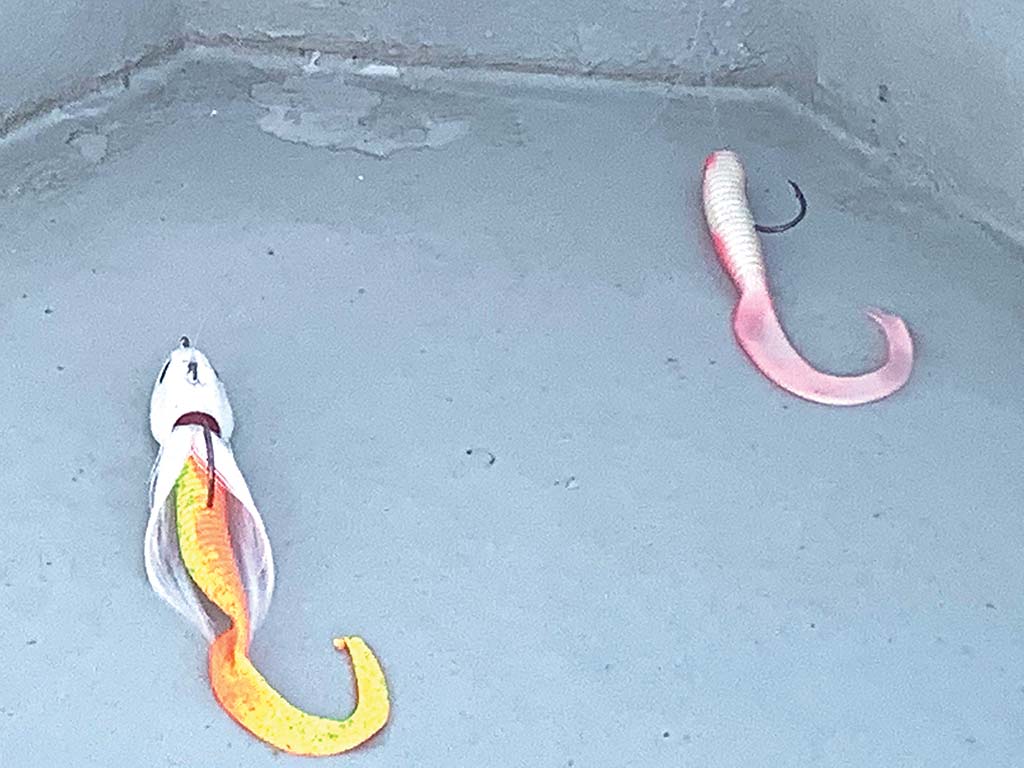
Rig Or Jig?
Generally, the first thing I do when pulling up over ocean structure is to cut the engine and observe the drift speed of the boat. I do this before dropping lines in order to determine the weight of the jig, bucktail or sinker I need to get to the bottom without excess scope. Most fluke fishermen want lines to fish straight up and down with only the slightest scope away from the boat. It’s difficult to determine this before setting lines because conditions can change day to day.
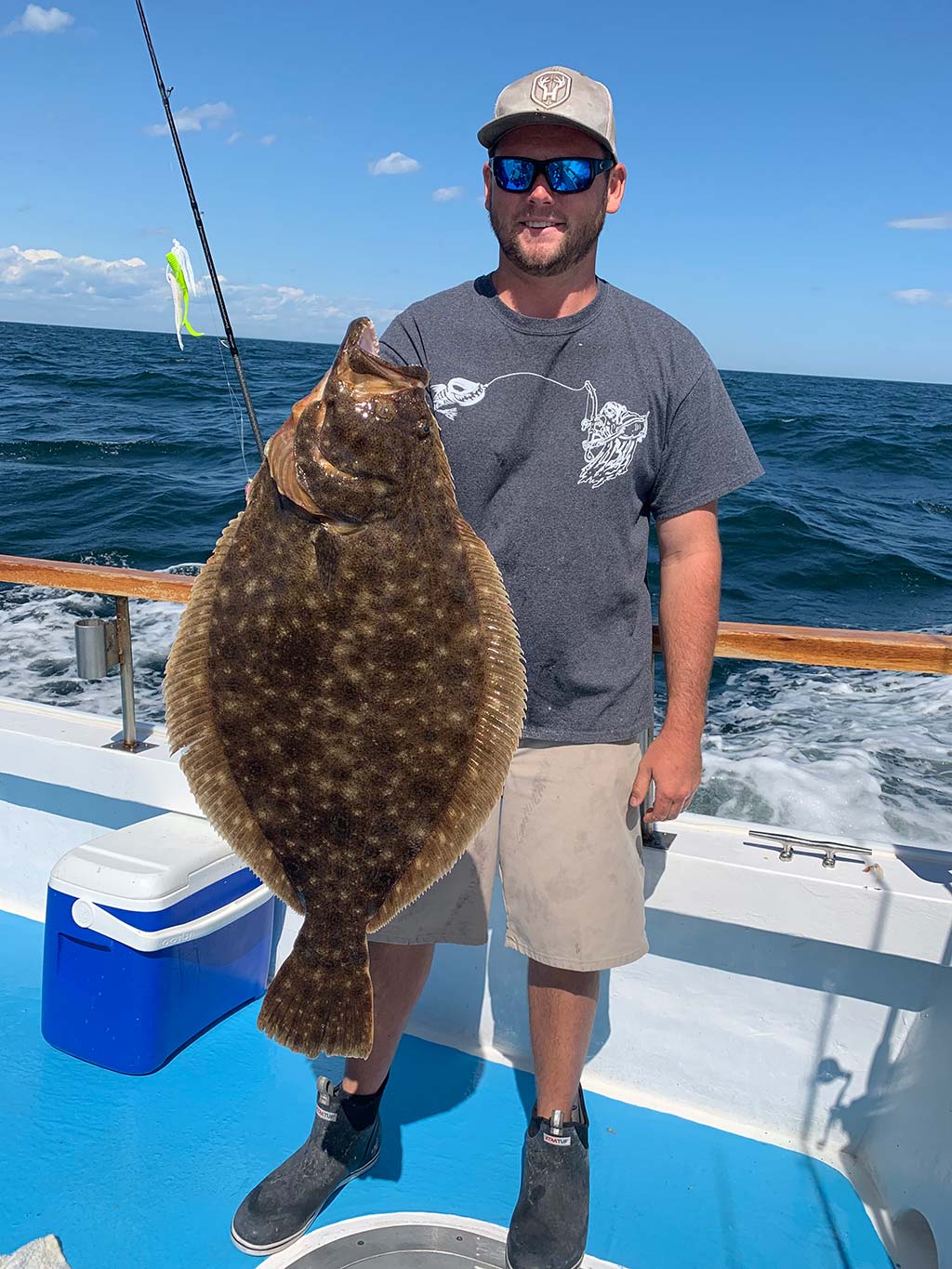
In fact, as I’m coasting into a reef or wreck area, I’ll immediately focus my gaze on any high fliers that commercial fishermen have staggered around the area. If they are standing straight up, I know that the drift speed is likely less than .4 mph. If they are bent half way toward the water, I’m optimistic that I’ll see excellent drift conditions in the .8 to 1.2 area. If they are parallel to the water, it’s clear that there exists a smoking-fast current.
When fishing on a boat with multiple anglers, it’s prudent for anglers to watch what is working near them. If on a private boat, then a plan to use different terminal tackle can be put into action. As one presentation outdoes the rest, others can switch to the hot set-up. On six-pack charters or party boats, observant anglers can really make use of their surroundings. Many times, there are one or two anglers outfishing the rest due to either tackle or technique.

